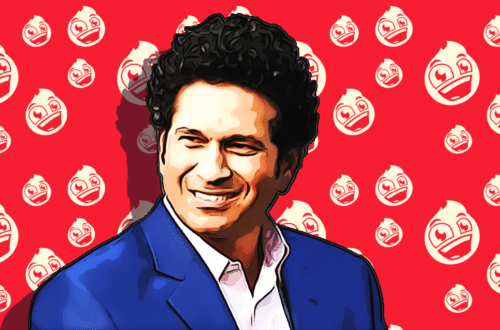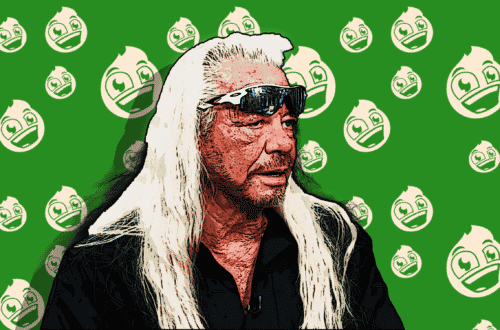John Wayne Net Worth

| Net Worth: | $53 Million |
| Salary: | $100,000 Per Year |
| Real Name: | Marion Robert Morrison |
| Date of Birth: | 26th May 1907 |
| Died: | 11th June 1979 |
| Cause of Death: | Stomach Cancer |
| Age: | 72 years old |
| Gender: | Male |
| Height: | 6 ft 3 in (1.91 m) |
| Profession: | Actor, Producer |
| Nationality: | American |
| Updated: | 1st July 2023 |
John Wayne is one of the greatest American actors during the Hollywood Golden Era whose career in the film industry spanned over 5 decades; he appeared in 142 motion pictures. John Wayne didn’t originally set himself out to be an actor—an injury he had while in college turned out to be a blessing and life-changing.
John Wayne was originally given the stage name Anthony Wayne by director Raoul Walsh. However, Fox Studios Chief Winfield Sheehan rejected the name, saying it sounded too Italian—they both settled for the name John Wayne without Wayne being present. Off-screen, Wayne likes to be called and known as Duke; the name started by a local fireman referring to him as Little Duke while he was still in high school as he was always seen together with his Airedale Terrier pet dog.
His first leading role was in the film The Big Trail (1930); even though it was a big-budgeted film, it was a complete commercial failure. Wayne’s career breakthrough was a decade later when he starred in John Ford’s Stagecoach, the film was a huge critical and financial success that led Wayne to become a mainstream star.
John Wayne was credited for his contribution in allowing the hero to fight convincingly as the villain. In the Western films of that era, the hero or the good guy was only allowed to retaliate softly against the villains. Otherwise, it would be seen as unheroic. In 1972, the Atlantic Falcons selected John Wayne in the last round of the NFL Draft. According to their selection, the organization stated the pick was for his experience. With Wayne being at 64 years old at that time, unfortunately, the NFL didn’t approve.
John Wayne is sometimes referred to as an American icon; he was seen as the quintessential all-American male. Aside from his recognition and fame in Hollywood, Wayne is vocal about his patriotism, symbolizing and communicating American values and ideals. His failure to serve his country later became his most excruciatingly painful period. In recognition of his endured patriotism, John Wayne was given two of the highest civilian decorations by the U.S. government: Congressional Gold Medal in 1979 and posthumously awarded the Presidential Medal of Freedom in 1980.
What is John Wayne’s Net Worth?
John Wayne was among the top ten actors of his generation whose films generated the highest box office gross earnings between 1930 to 1974. At the time of his death, John Wayne’s net worth was approximately US$53 million, adjusted for inflation in today’s dollars. From his real estate portfolio, other investments, and film royalties, John Wayne earned $400,000 annually in passive income. After his death, it was revealed by his lawyer that Wayne had property worth $4 million and $23.4 million in personal property.
Who is John Wayne?
John Wayne’s birth name is Marion Robert Morrison. Born on May 26, 1907, in Winterset, Iowa, U.S. His father, Clyde Leonard Morrison, was a pharmacist, and his mother’s name is Mary Alberta Brown. John Wayne was of English, Scottish, and Irish origin.
In 1916, Wayne’s family moved to Glendale, San Fernando Valley, Los Angeles, where he attended Glendale Union High School. At school, Wayne performed exceptionally well in both sports and academics. He was part of the school’s football team and was also part of the 1924 league champion Glendale High School team. Wayne was an active member of the Order of DeMolay, a character-building and leadership development organization for young men between the ages of 13 and 21.
John Wayne intended to join the U.S. Navy after graduating from high school, but when he applied to the U.S. Naval Academy, his application was rejected due to his poor grades. Instead, Wayne furthered his education at the University of Southern California (USC), where he studied pre-law. He got tuition-free from the award of a football scholarship as he played for the USC football team. His time at USC was cut short when he broke his collarbone from bodysurfing. In turn, his scholarship got revoked, and Wayne had to leave school with the lack of funds.
Early Career
In returning the favor to Wayne’s college football coach for giving them free tickets to the USC football game, Western film star Tom Mix and director John Ford hired John Wayne as a prop boy and extra. John Wayne developed a lifelong friendship with John Ford, who from that moment on went on to star in many of Ford’s films. Later in Wayne’s career, he credited an acquaintance, Wyatt Earp (a lawman and gambler) with his talk, walk, and persona.
During the beginning of Wayne’s acting career, Ford helped Wayne to appear in many bit roles with Fox Film Corporation. John Wayne’s first starring role came in the 1930 film The Big Trail when Director Raoul Walsh saw him working as a prop boy. In this film, he was given the stage name John Wayne by Raoul and Fox Studios Chief Winfield Sheehan. Being starred in an A-list film, Wayne’s pay was raised to $105 a week. The film cost $32.8 million in today’s dollars to produce, but it was a huge flop at the box office as only a few theaters were equipped to show the film in its widescreen process.
The uttered box office failure had Wayne returned to playing small and bit roles. For the next nine years, from 1930 to 1939, Wayne appeared in about 90 horse operas (A western movie that is clichéd or formulaic).
Career Breakthrough & World War 2
In 1939, John Ford firmly wanted Wayne to star in his film, Stagecoach, but because of his status and track record being in B-movies and low-budget Western films for the last decade, no one wanted to take the risk, and all film studios declined to finance the film. Ford eventually received finance from an independent producer, Walter Wagner. The film was a huge critical and financial success and boosted John Wayne as an A-list actor and a mainstream star. In 1941, Wayne co-starred in his first color film, Shepherd of the Hills. In 1942, for six months, he starred in his radio adventure series, Three Sheets to the Wind.
During this period, America prepared for war after Pearl Harbor was attacked. Wayne was exempted from conscription due to his age (34 at the time) and family status. Wayne eagerly wanted to join the war; he even repeatedly wrote letters to Ford expressing his strong desire to enlist and even inquired about the possibility of joining Ford’s military unit. Republic Studios strongly opposed Wayne’s desire to enlist as John Wayne was the only A-list actor in the contract. The company threatened to file a lawsuit and intervened in the Selection Service process. The Office of Strategic Services (OSS)—equivalent to today’s CIA, commander William J. Donovan wrote him a letter that he got accepted into the Field Photographic, but Wayne never get to find out as his then-wife kept it hidden from him.
From 1943 to 1944, John Wayne toured the U.S. bases and hospitals for three months in the South Pacific Area with the United Service Organizations. Donovan requested him to assess whether General Douglas MacArthur, commander of the South West Pacific Area, or his staff were hindering the work of the OSS.
In 1949, Wayne turned down the starring role in All King’s Men stating it was un-American. Another actor who took the role went on to win the 1949 Oscar for the best male actor. With a deep grudge against Columbia Pictures, Chief Harry Cohn had Wayne turned down another starring role, The Gunfighter (1950). In 1952, he co-founded the production company, Batjac, in which Wayne had produced many films for himself and other stars.
Throughout his career, John Wayne appeared in about 24 of John Ford’s films over 20 years. His most popular role was in the 1954 film, The High and the Mighty, in which he portrayed a heroic copilot. The Searchers (1956) was considered by many as his finest and most complex performance.
After nearly five decades in the film business, John Wayne won an Oscar for the best actor at the Academy Awards in True Grit (1969). In 1963, John Wayne played his last lead role in John Ford’s film, Donovan’s Reef. The last film of his career was in 1976, The Shootist—the film grossed $95 million in the U.S. and $42.2 million in theatrical rentals.
Personal Life
John Wayne was notoriously known for having affairs during his marriages. He married three times and divorced twice; the latter of his two wives are from Latin America. After separating from his third wife, he had a romantic relationship with his former secretary, Pat Stacy, until she died in 1979.
He married his first wife, Josephine Alicia Saenz, in 1933, divorced in 1945, and fathered four children. His second wife, Esperanza Baur, married in 1946 and divorced in 1954. Wayne married his third wife in 1954, they had three children together.
At one time, Wayne’s second wife, Baur, attempted to shoot Wayne when he arrived home after she found out he had an affair with the Hollywood actress and co-star, Gail Russell. From 1938 to 1947, he had a lengthy affair with a British actress, Merle Oberon. John Wayne died on June 11, 1979, while still in a relationship with his former secretary. Throughout this career, Wayne was known to have other several high-profile affairs.
John Wayne was a chain smoker since his youth. He was diagnosed with lung cancer in 1964. Fortunately, he had a successful operation but it came at the cost of having his entire left lung and two ribs removed. Wayne loved reading books on literature, and he is a member of the Freemason.
Interesting Facts about John Wayne
- Wayne was a very popular icon during the Hollywood Golden Age.
- He couldn’t enlist in the army to fight for his own country during World Word 2.
- He is strongly opposed to communism.
- John Wayne was a proactive insider of the Hollywood Black List.
- Soviet leader Joseph Stalin wanted to assassinate Wayne for his vocal political stance on anti-communism.
- In the 1940s, his hair began to thin out, and he started wearing hairpieces.
- People who were close to him said his personality and sense of humor are similar to that of him on the big screen.
- Film directors would try to get John Wayne’s scenes done by afternoon because by then, Wayne would turn into a mean drunk.
- When the Emperor of Japan, Hirohito, visited the United States in 1975, he asked to meet Wayne.
- When the Soviet leader Nikita Khrushchev visited the U.S. in 1979, he requested two things: to visit Disneyland and meet John Wayne.
- Duke University in Durham, North Carolina, disallowed Wayne’s heirs to trademark the image of John Wayne and bear the name Duke for their Kentucky Straight Bourbon enterprise.
- Various public locations are named in honor of John Wayne, including an airport, public school, state park, and state highway.
- He was loved by many well-known Hollywood celebrities, including Elizabeth Taylor and Frank Sinatra. As well as prominent politicians.
- He converted to Roman Catholicism before his death.
John Wayne FAQs
What is John Wayne Net Worth?
John Wayne net worth is currently $53 million USD.
How much money does John Wayne earn?
John Wayne earns $100,000 per year from various sources.
How tall is John Wayne?
John Wayne is 6 ft 3 in (1.91 m)
How old was John Wayne?
John Wayne was 72 years old at the time of their death.
When is John Wayne birthday?
John Wayne birthday is on 26th May.










